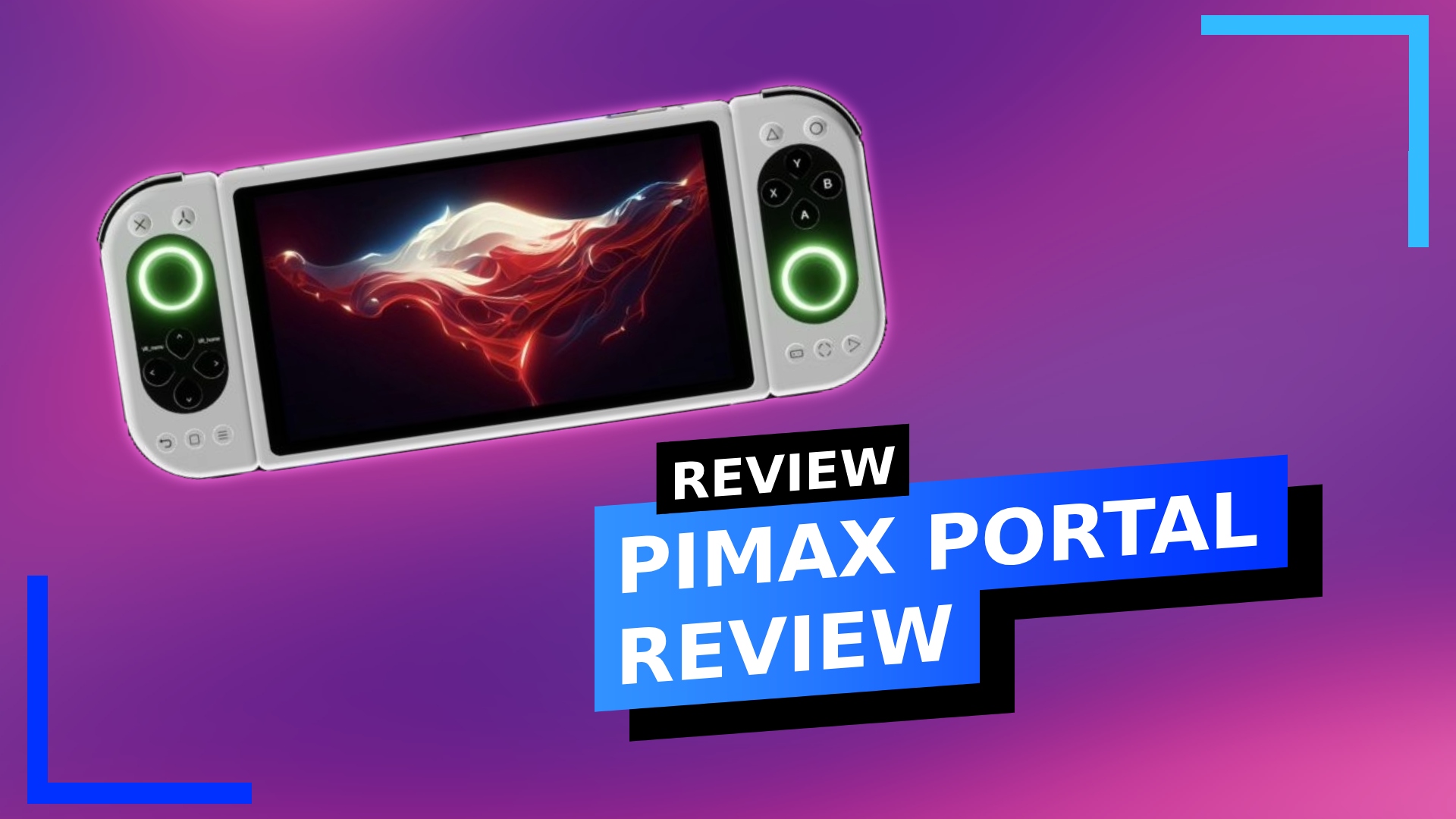High-end Android handhelds always have a rough time here at RetroResolve. That’s because despite some of them being decent devices, what often happens is we get okay tech mixed with a fairly ludicrous price tag. The Logitech G Cloud? Great screen, but it has an expensive identity crisis. How about the Razer Edge? Solid tech, but it’s full of frankly bizarre design choices.
When Android devices fall into the same price ballpark as PC handhelds like the Steam Deck, they need to do something more compelling to make the device more attractive. I simply can’t recommend either the G Cloud or the Razer Edge over something like the Steam Deck. When it comes to tech, support, and feel, the Steam Deck is the better choice.
How does the Android-based Pimax Portal fit into all this? Pimax has avoided most of the common pitfalls: The device hasn’t been rushed to capitalize on a trend, the tech inside is more powerful than its other Android rivals, and Android as an operating system has been tamed to make it feel more like a home console experience rather than a fancy tablet with a controller shell.
Simply put, the Pimax Portal is the gold standard of Android gaming, and an example of how to do things with care and consideration.
Pimax Portal Look and Feel.
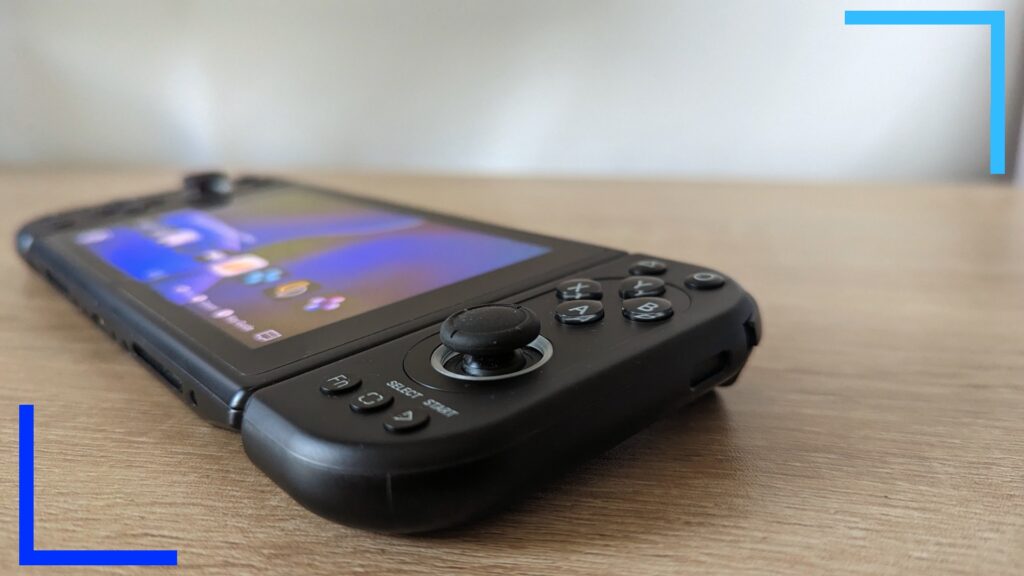
You won’t make it through a Pimax Portal review without getting a Nintendo Switch comparison. From the detachable controllers to the 5.5-inch screen (the same as the Switch Lite) all the way to the square game scrolling of the main home screen, Pimax was clearly inspired by the Nintendo Switch and wanted to make something similar.
This is where the ‘care and consideration’ I mentioned comes in. The Pimax Portal isn’t a Nintendo Switch rip-off. It’s taken these inspirations and updated and improved on them. Take the detachable controllers, for instance. The Pimax Portal doesn’t feature rails of any kind. Instead, Pimax went with some super strong magnets that snap the controllers into place whenever they get near the console. The magnets are so strong, in fact, they come with a warning to avoid injury. I haven’t hurt myself yet, but it’s something you’ll need to be aware of.
This minor change makes playing with the Pimax Portal all the more fluid. I can quite literally just bend the controllers off and magnetically connect them together to form a regular controller whenever I want to switch to a docked setup. It’s just like the Switch, only more advanced in that regard.
In the hand, the Pimax Portal’s Switch Lite size makes it easy to hold and play on. It’s not like the Steam Deck or even the ROG Ally where it’s quite cumbersome to maneuver around into a comfortable position. At 367 grams, it feels really light as well.
All of these smaller touches result in a handheld that’s comfortable to hold and surprisingly intuitive. If comfort is a main concern, the Pimax Portal makes multiple smart choices, and the result is something that instantly feels like a solid purchase.
Emulation Testing and Results.

Emulation is without question the Pimax Portal’s strong suit. It’s a very capable machine that’s only limited by the state of the individual emulators.
I’ve tested multiple games from different systems to get an idea of how far I can push the Pimax Portal. As expected, everything up to Dreamcast runs without any problems, although most Android handhelds can manage that, so it’s not really a key selling point.
It’s when we move onto the more CPU-heavy emulators that the Pimax Portal surprises. Dreamcast, PSP, GameCube, and PS2 run almost flawlessly. For PS2-era games, you can even up the internal resolution, meaning those 480p PS2 games now run in stunning 1080p. Widescreen and 60 frames per second patches also work great on the device, and yes, it looks as great as you’re imagining.
So where’s the brick wall? The Razer Edge managed to play some low-end Switch titles before reaching its limit. The Pimax Portal, on the other hand, manages to almost break through the wall.
Low-end Switch titles can hit 60 frames per second on the Pimax Portal with ease, but it’s the more advanced titles that show just what the handheld is capable of. Any problems here aren’t down to the Pimax Portal, it’s the state of the emulators. The device was able to breeze through games like Super Mario Bros. U Deluxe, and Super Mario Odyssey showed promise but was hindered by the emulator running into problems. It’s the same for Pokemon: Legends Arceus. It could run at 25 frames per second in Skyline and higher in Yuzu, but Yuzu doesn’t load in textures correctly.
Why do games running at 25 frames matter so much? That’s because it shows the tech inside the Pimax Portal isn’t the problem. It’s the emulators, which in their defense are still very new to Android. The Portal has the power, we just need to wait for the emulators to catch up.
The graph above shows you the kind of framerates I was getting with the stock settings and minimal tinkering. I would say 3DS and Switch titles are the most troublesome, but I’d also say there are multiple surprises to be found. The amount of games that do run without problems is enough for the Pimax Portal to be considered a win as far as I’m concerned. I am impressed!
Android Gaming.
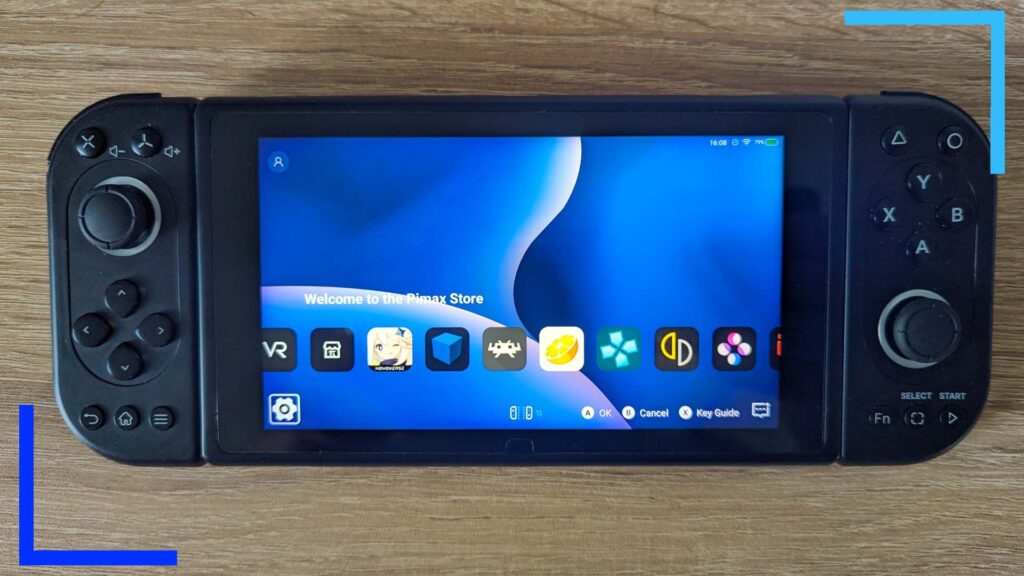
If there’s one obvious complaint with the Pimax Portal, it’s the lack of built-in support for Android games.
Thanks to the power of the device, Android games run smoothly. Whether that’s Genshin Impact at high settings or Call of Duty Mobile, the Pimax Portal has enough power to run the most-played games with ease. And thanks to the 4000 mAh battery, you can easily get over two hours of solid playtime before you even need to look at how much power’s left (emulation manages from 90 mins for Switch games to three hours for mid-range games).
Despite having 18 buttons on the front of the handheld, the controls work well for what they need to do. I’ll always prefer concave thumbsticks to the convex sticks found in the Portal, but that’s my personal preference. Convex for racing games, concave for everything else.
So where do things go wrong? While the controls are comfortable and responsive for the most part, a lot of the main games don’t work unless you map the controller manually. Call of Duty just wouldn’t detect that a controller was connected, and Genshin Impact doesn’t feature controller support at all on Android. This problem just kept popping up on most of the Android games I tried.
Pimax has included a brilliant piece of software for mapping screen areas to buttons, and the result doesn’t produce a massive amount of input delay. But, it’s a chore needing to set this up for the games that need it. There is a cloud option to download custom profiles as well, but so far I’ve not seen that work.
Is this a deal-breaker? It all depends on your usage. It is frustrating needing to do this, but it’s hard to hold Pimax responsible for the crimes of developers, although that’s on a case-by-case basis. The main thing, for me, is that Pimax knew this would be an issue and included a way to solve it via the on-screen key mapper.
One thing I will say is Xbox Cloud Gaming works nearly perfectly. The app recognized my controller and I was straight into playing Starfield in a matter of seconds. Lag and input delay weren’t issues for me, but that will depend on what your Internet upload and download speeds are (Microsoft recommends speeds of 10 Mbps on mobile devices and 20 Mbps if you’re playing on a console, PC, or tablet).
Pimax Portal Operating System.
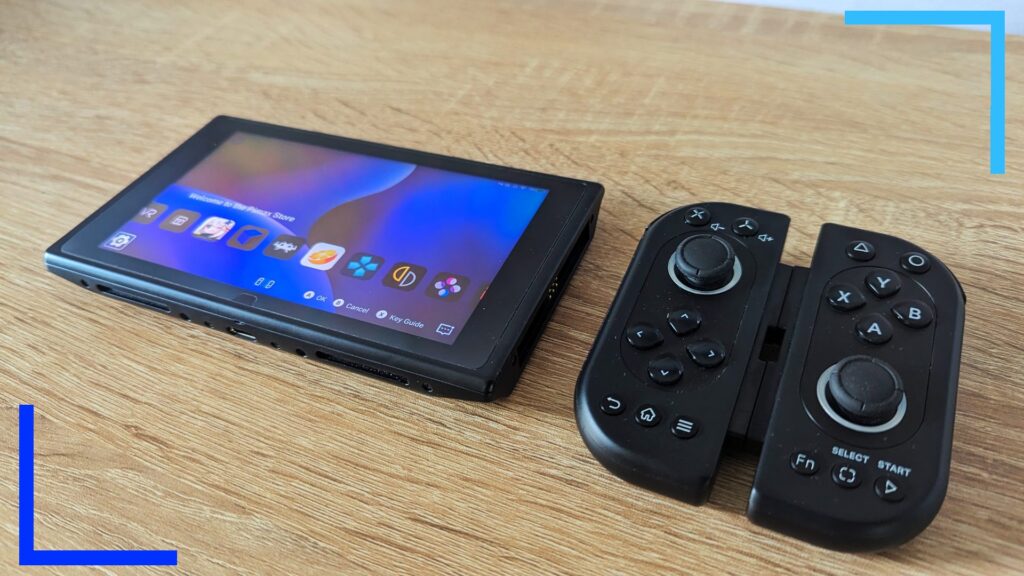
The Pimax Portal uses a modified version of Android 10 and it’s the most user-friendly version I’ve used to date.
Apps are displayed in little boxes from the left to the right of the screen. It’s not dissimilar from the Nintendo Switch in that regard. Scroll to the furthest right and you’ll find an option to view all apps, and along the bottom of the screen is where you’ll find the Portal’s settings – which are separate from the Android 10 settings – your controllers, and a key guide.
What Pimax has gone with is something that’s easy to navigate. As many Android users will tell you, the moment you open the settings menu you’re swamped with a ton of superfluous options. On the Pimax Portal, this has been simplified so the important and relevant stuff is always a click away.
This whole ease of use extends to the physical function button. Press this button and a Steam Deck-like, quick-access menu will pop up on the right of the screen. It’s here you can turn the Wi-Fi on and off, switch to airplane mode, rotate the screen, alter the volume and brightness, or launch the key mapping software. Pimax is also so confident in the device, there’s even a frame counter to show you how well something is running.
All of the Android handhelds I’ve reviewed come with a custom version of Android, but I’m besotted with what Pimax has cultivated here. It’s simple but luscious and puts everything you need front and center rather than buried under different setting headings. If you’re new to the Android ecosystem, the Pimax Portal will be easy to understand.
Pimax Portal Specifications.
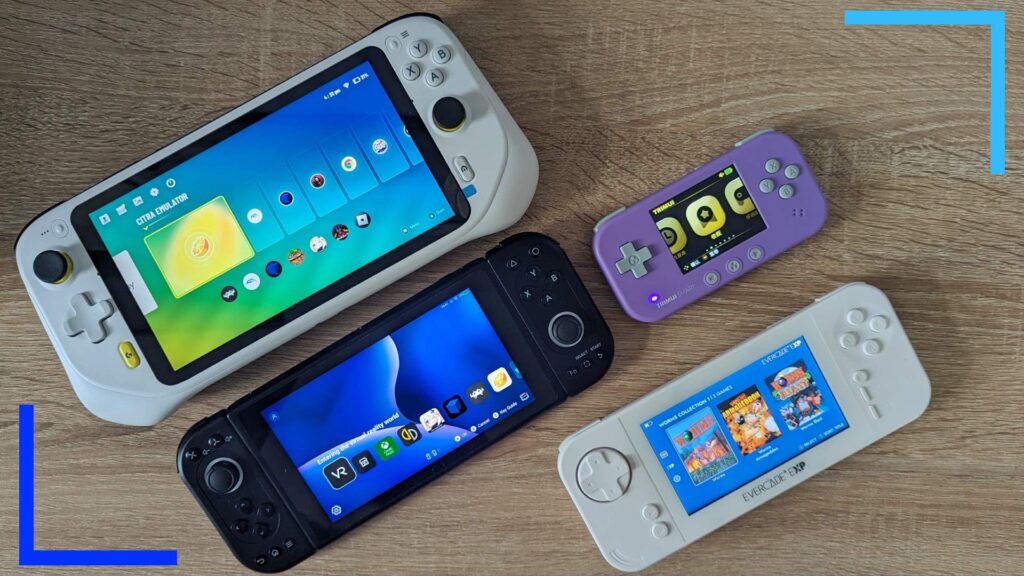
Priced from $369 for 8GB RAM with 128GB storage, $399 for 8GB RAM with 256GB storage, and $549 for the QLED version with 8GB RAM and 256GB storage, the Pimax Portal packs in a lot of power for the price.
It’s the specs that really make the Pimax Portal what it is. The Snapdragon XR2 is more powerful than the Logitech G Cloud’s Qualcomm Snapdragon 720G thanks to its higher cache size, TDP wattage, and GFLOPS. In simpler terms, the Snapdragon XR2 is a VR-ready chip, meaning it needs to be powerful to accommodate how much extra stress comes with running games in VR.
- CPU: Qualcomm Snapdragon XR2.
- GPU: Qualcomm Adreno 650.
- RAM: 8GB.
- Storage: 128GB/256GB.
- Screen: LCD.
- Resolution: 3840 by 2160 (4K).
- Screen Size: 5.5 inches.
- Refresh Rate: 144Hz.
- Wireless: Wi-Fi 6E, 2.4G, 5G, 6G.
- Battery: 4000mAH.
Virtual Reality.
The Pimax Portal is compatible with the Pimax virtual reality (VR) headset. The Portal itself features cameras for tracking and the powerful Snapdragon XR2, which is the same architecture as what Meta uses in the Meta Quest 2.
I haven’t been able to test the headset out yet, but if that changes I’ll be sure to update this section with my thoughts.
Conclusion.
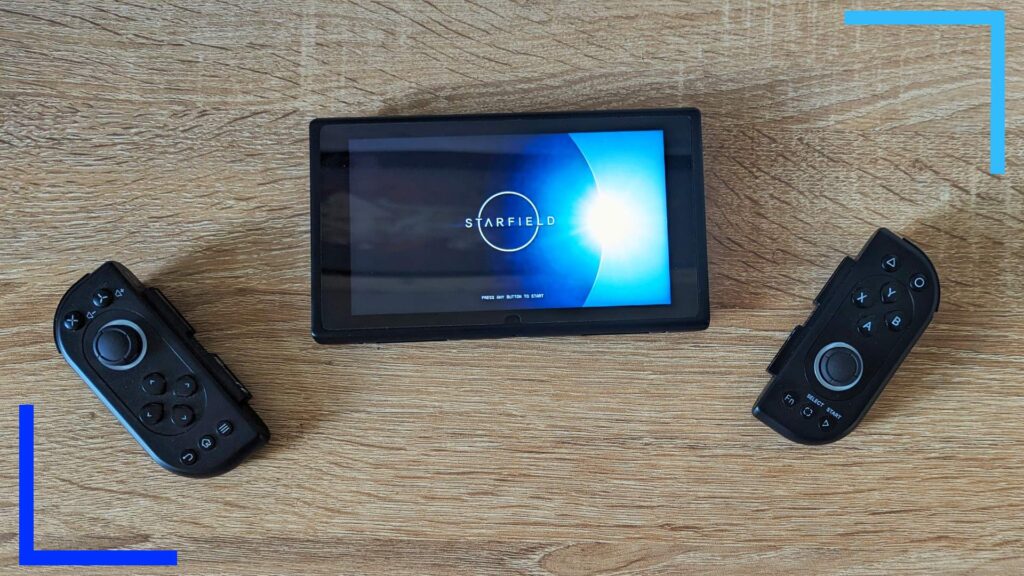
It’s not often I say this but the Pimax Portal is an Android device I can thoroughly recommend. It’s the mix of power and smart design that really makes this thing come alive. It feels great to hold, the magnetic joy-con-style controllers are excellent, and the power of the device puts it in a different league from what came before it.
The minor problems and annoyances are there, but they’re not as pronounced as with other Android devices. You’ll spot them, but they won’t leave you questioning why you bought the device.
If you care about power and value for money, and want an Android device that can run almost anything you throw at it, the Pimax Portal is the current industry standard to beat.
Review unit provided by Pimax. | To learn more about our review policy click here. | Alternatively, click here to find out why you can trust me.

